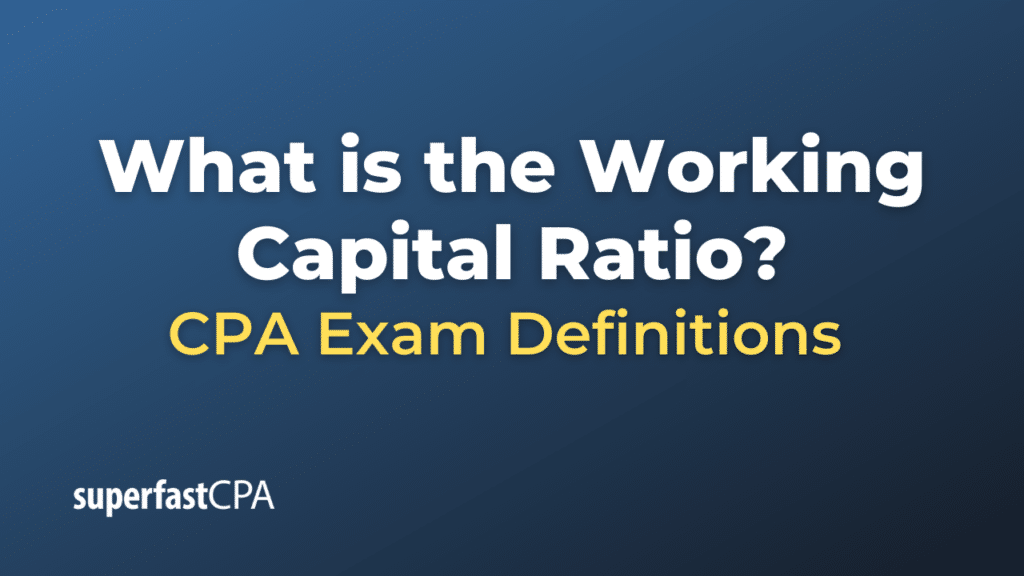Working Capital Ratio
The Working Capital Ratio, also known as the Current Ratio, is a liquidity ratio that measures a company’s ability to cover its short-term obligations with its short-term assets. It is calculated as follows:
\(\text{Working Capital Ratio (Current Ratio)} = \frac{\text{Current Assets}}{\text{Current Liabilities}} \)
Interpretation:
- Ratio > 1: Indicates that the company has more current assets than current liabilities, suggesting that it should be able to meet its short-term obligations. However, a ratio that is too high could indicate inefficiency in utilizing resources.
- Ratio = 1: Indicates a balanced position where current assets equal current liabilities.
- Ratio < 1: Suggests that the company might have difficulty meeting its short-term obligations if they all came due at once. It’s generally a sign of poor financial health, but interpretations can vary by industry.
Example of the Working Capital Ratio
Let’s consider a fictional bakery, “SweetTreats,” to illustrate how the Working Capital Ratio is calculated and what it might imply for the business.
Financial Information for SweetTreats Bakery:
- Current Assets:
- Cash: $10,000
- Accounts Receivable: $5,000
- Inventory: $8,000
- Total Current Assets: $23,000
- Current Liabilities:
- Accounts Payable: $6,000
- Short-term Loan: $4,000
- Outstanding Utilities: $2,000
- Total Current Liabilities: $12,000
Calculating the Working Capital Ratio:
To find the Working Capital Ratio for SweetTreats, you would divide Total Current Assets by Total Current Liabilities:
\(\text{Working Capital Ratio} = \frac{\text{Total Assets}}{\text{Total Liabilities}} = \frac{23,000}{12,000} \approx 1.92 \)
Interpretation:
- With a Working Capital Ratio of 1.92, SweetTreats has about 1.92 times the short-term assets needed to cover its short-term liabilities. This suggests that the bakery is in a relatively healthy position to meet its immediate financial obligations.
- Although the ratio indicates liquidity, SweetTreats might still want to scrutinize its asset management practices. A ratio that is too high, although not the case here, might suggest that the business is not efficiently utilizing its assets for growth (e.g., it may be holding too much cash that could be invested elsewhere).
- The bakery would also want to compare this ratio to industry norms and competitors to ensure it is in line with market standards.
By regularly calculating and assessing the Working Capital Ratio, SweetTreats can make informed decisions about its short-term financial health, liquidity needs, and operational efficiency. It may decide, for example, to invest some of its cash into marketing initiatives to grow sales, or perhaps consider paying down its short-term debt more aggressively.













